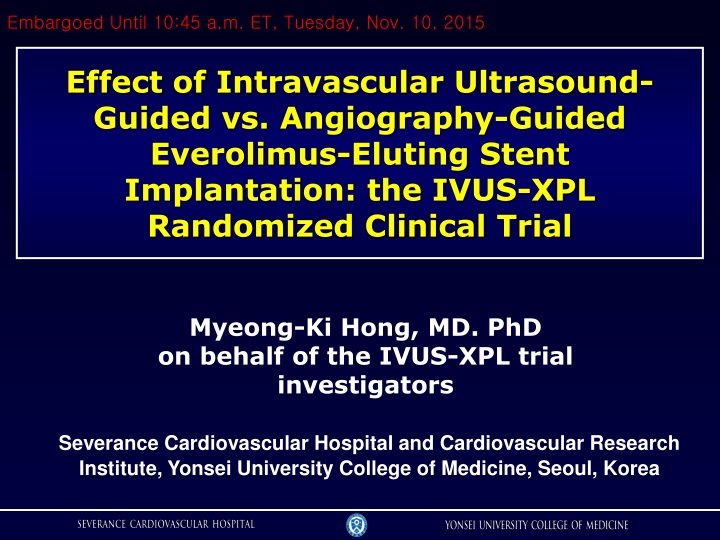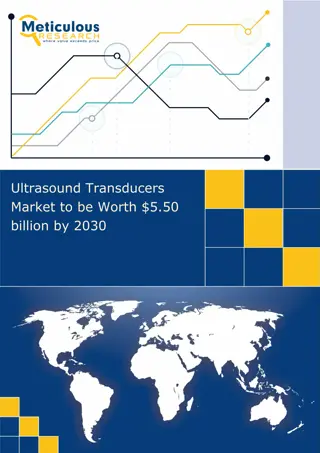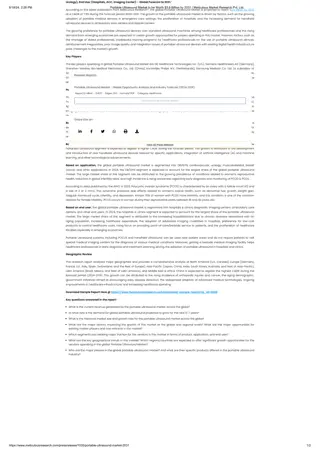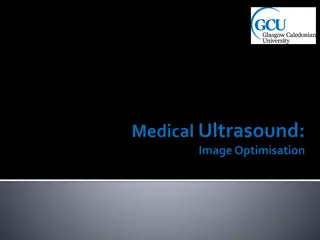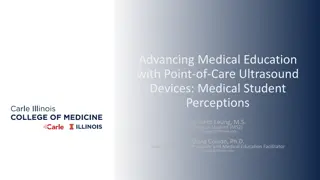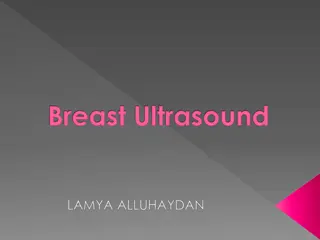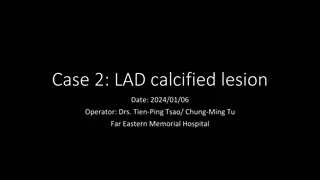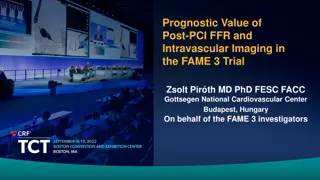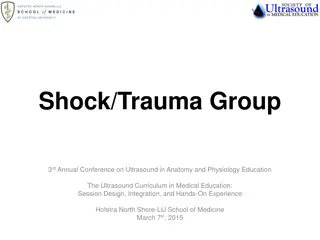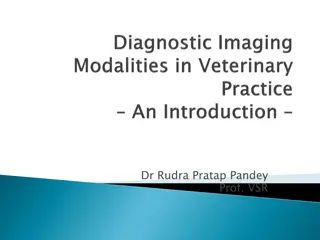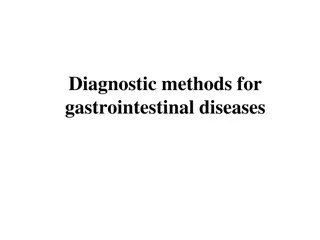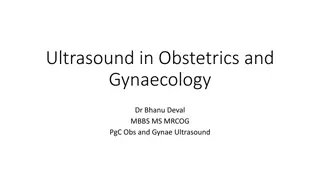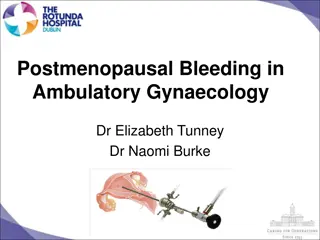Effect of Intravascular Ultrasound-Guided vs. Angiography-Guided Everolimus-Eluting Stent Implantation
In the IVUS-XPL Randomized Clinical Trial by Myeong-Ki Hong, MD, the study compares the outcomes of intravascular ultrasound-guided and angiography-guided everolimus-eluting stent implantation. The research analyzes the efficacy and potential advantages of using intravascular ultrasound in guiding stent placement, offering valuable insights for optimization of stent procedures and patient outcomes in coronary interventions.
Download Presentation

Please find below an Image/Link to download the presentation.
The content on the website is provided AS IS for your information and personal use only. It may not be sold, licensed, or shared on other websites without obtaining consent from the author.If you encounter any issues during the download, it is possible that the publisher has removed the file from their server.
You are allowed to download the files provided on this website for personal or commercial use, subject to the condition that they are used lawfully. All files are the property of their respective owners.
The content on the website is provided AS IS for your information and personal use only. It may not be sold, licensed, or shared on other websites without obtaining consent from the author.
E N D
Presentation Transcript
Embargoed Until 10:45 a.m. ET, Tuesday, Nov. 10, 2015 Effect of Intravascular Ultrasound- Guided vs. Angiography-Guided Everolimus-Eluting Stent Implantation: the IVUS-XPL Randomized Clinical Trial Myeong-Ki Hong, MD. PhD on behalf of the IVUS-XPL trial investigators Severance Cardiovascular Hospital and Cardiovascular Research Institute, Yonsei University College of Medicine, Seoul, Korea
Background Clinical usefulness of IVUS IVUS usage during PCI Improved clinical outcomes There are no adequately powered randomized clinical trials to prove the clinical usefulness of IVUS for second-generation DESs. Hypothesis The generation DES implantation would be superior to those of angiography-guided DES implantation in a subset of patients with long coronary lesions. clinical outcomes of IVUS-guided second-
Study Design A prospective, randomized, multi-center trial At 20 centers in Korea Enrollment period: Oct 2010 and July 2014 Key inclusion criteria Age 20 years or older Patients with typical chest pain or evidence of myocardial ischemia Non-emergent conditions Stent length 28 mm based on angiographic estimation Significant coronary artery stenosis (>50% based on visual estimate) considered for coronary revascularization with stent implantation Key exclusion criteria Acute ST-segment elevation or MI within 48 hours Age >80 years Cardiogenic shock Left ventricular ejection fraction <40% Left main disease requiring PCI Bifurcation lesion with 2-stent technique Chronic total occlusion Presence of previously implanted DES within 6 months In-stent restenosis lesion
Study Design Patients with long coronary lesions (Implanted stent 28 mm in length) N = 1400 DES implantation with angiography guidance n = 700 DES implantation with IVUS guidance n = 700 Clinical follow-up at 12 months Primary end point: MACE Cardiac death, target-lesion related MI, and ischemia-driven TLR Trial Registration: clinicaltrial.gov Identifier: NCT01308281 Clinicaltrial.gov Identifier: NCT01308281
Statistical Analysis Sample size calculation Assumption the overall incidence of MACE to be 7% at the 1-year in the angiography-guidance arm. Superiority comparison with an expected risk reduction of 50% in the IVUS-guidance arm ( =0.05, =0.8, drop-out=5- 10%) Each 700 patients in the IVUS guidance arm and in the angiography guidance arm. Turco MA, et al. JACC Cardiovasc Interv. 2008;1:699-709 Kim YH, et al. Circulation. 2006;114:2148-2153 Primary analysis Intention-to-treat analysis with cumulative incidences of MACE at 1 year using the Kaplan-Meier estimates. Comparison using the log-rank test.
Procedure Criteria for stent optimization IVUS-guidance arm Minimal lumen CSA > lumen CSA at distal reference segments Angiography-guidance arm Angiographic residual diameter stenosis <30% and the absence of angiographically detected dissection
Study Flow 13372 Patients underwent coronary angiography during the study inclusion period 11972 Excluded 1400 Randomized 700 Randomized to undergo IVUS-guidance PCI 700Randomized to undergo angiography-guidance PCI Underwent IVUS-guidance PCI as randomized Underwent angiography-guidance PCI 5 Technical failure to deliver IVUS catheter Physician decision due to unfavorable coronary anatomy Underwent angiography-guidance PCI as randomized Underwent IVUS-guidance PCI 22 Physician preference in complex lesions Angiographically ambiguous anatomy 678 670 22 30 17 8 Withdrew consent Lost to follow-up Withdrew consent Lost to follow-up 4 3 36 34 700 Included in primary analysis 700 Included in primary analysis
Baseline Characteristics P value Characteristics No. of patients Age, y Male sex Hypertension Diabetes mellitus Left ventricular ejection fraction, % Clinical presentation Stable angina Unstable angina Acute myocardial infarction No. of treated lesions per patients Duration of DAPT, days Coronary arteries Left anterior descending artery Left circumflex artery Right coronary artery Baseline QCA data Reference vessel diameter, mm Minimum lumen diameter, mm Diameter stenosis, % Lesion length, mm Stent length, mm IVUS-guidance 700 64 (9) 483 (69) 454 (65) 250 (36) 62.9 9.8 Angiography-guidance 700 64 (9) 481 (69) 444 (63) 256 (37) 62.4 10.2 .54 .91 .58 .74 .33 .36 358 (51) 242 (35) 100 (14) 1.34 (0.56) 365 (180, 365) 356 (51) 226 (32) 118 (17) 1.36 (0.57) 365 (180, 365) .57 .15 .14 455 (65) 96 (14) 149 (21) 419 (60) 108 (15) 173 (25) 2.89 0.45 0.83 0.42 71.1 14.3 34.7 10.8 39.3 13.1 2.85 0.45 0.82 0.43 71.4 14.4 35.2 10.5 39.2 12.3 .13 .56 .70 .41 .90
Angiographic and Procedural Characteristics Angiography- guidance P value Characteristics IVUS-guidance Adjunct post-dilatation 534 (76) 3.14 0.43 402 (57) 3.04 0.42 <.001 Final balloon size, mm <.001 Overlapping stent 145 (21) 138 (20) .64 No. of stents per lesions 1.3 (0.5) 1.3 (0.5) .48 Stent edge dissections 15 (2) 13 (2) .70 Coronary perforation 0 0 1.00 16.5 4.1 15.9 4.1 Maximal inflation pressure, atm .052 Post-intervention QCA data 3.03 0.44 2.64 0.42 12.79 8.66 2.97 0.43 2.56 0.39 13.74 8.05 Reference vessel diameter, mm .01 Minimum lumen diameter, mm <.001 Diameter stenosis, % .04
Clinical outcomes at 1 year IVUS- guidance (n=700) Angiography- guidance (n=700) Log- Rank P value Hazard ratio (95% CI) Primary End Point MACE 19 (2.9%) 39 (5.8%) 0.48 (0.28 0.83) .007 Secondary End Point Cardiac death 3 (0.4%) 5 (0.7%) 0.60 (0.14-2.52) .48 Target lesion related MI 0 1 (0.1%) - .32 Ischemia-driven TLR 17 (2.5%) 33 (5.0%) 0.51 (0.28-0.91) .02 Stent thrombosis 2 (0.3%) 2 (0.3%) 1.00 (0.14-7.10) 1.00 Acute 1 (0.1%) 1 (0.1%) - - Sub-acute 1 (0.1%) 0 - - Late 0 1 (0.1%) - -
Primary End Point 5.8% 6 HR, 0.48 (95% CI, 0.28-0.83) Log-rank P = .007 Patients with Primary End Point Event, % 4 Angiography-guidance 2.9% 2 IVUS-guidance 0 0 3 6 9 12 Time Since Randomization, mo No. at risk Angiography arm IVUS arm 700 700 673 671 660 665 643 654 624 641
Post-intervention IVUS analysis in subgroup of IVUS guidance Patients not meeting the IVUS criteria Patients meeting the IVUS criteria P value Procedural and IVUS Characteristics No. of patients 363 315 Adjunct post-dilatation 282 (78) 3.15 0.45) 16.5 3.9 237 (75) 3.13 0.42 16.4 4.4 .34 Final balloon size, mm .52 Maximal inflation pressure, atm .87 17.52 5.34 17.27 5.04 Proximal reference EEM area, mm2 .56 9.02 3.51 8.86 3.27 Proximal reference lumen area, mm2 .57 6.09 1.91 5.71 1.71 Minimal lumen area, mm2 .008 9.44 3.98 10.94 3.83 Distal reference EEM area, mm2 <.001 5.55 1.82 6.83 1.68 Distal reference lumen area, mm2 <.001
Primary End Point 6 HR, 0.31 (95% CI, 0.11-0.86) Log-rank P = .017 Patients with Primary End Point Event, % 4.6% Patients not meeting the IVUS-criteria for stent optimization 4 Patients meeting the IVUS-criteria for stent optimization 2 1.5% 0 0 3 6 9 12 Time Since Randomization, mo No. at risk Not meeting the criteria Meeting the criteria 315 363 299 362 297 345 394 338 285 334
Conclusions Among patients requiring long coronary stent implantation, the use of IVUS-guidance for DES implantation was significant 2.9% absolute reduction and 48% relative reduction in the risk of MACE at 1 year, compared with angiography-guidance. associated with a Our findings suggest better clinical outcomes of MACE with IVUS-guidance compared to angiography-guidance for DES implantation, particularly for diffuse long lesions.
Dreams will Dreams will come true come true
